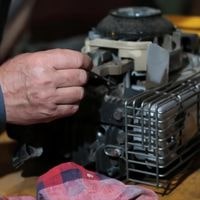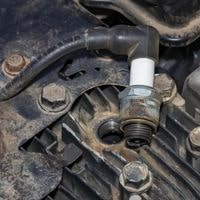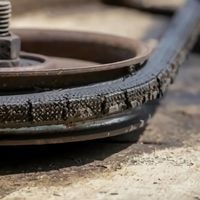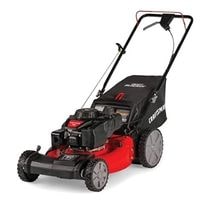Craftsman mower won’t start. Craftsman is a brand that has stayed in fashion through the decades. Its very name has become synonymous with quality, most likely due to its exceptional product line.
When fixing a Craftsman lawn mower not working, you have to identify the problem, determine the source of it, and perform the action in order to fix it.
While some problems may require only minor adjustments whilst others might be more complicated, requiring you to remove certain parts or replace other components that are damaged or worn out, one way or another, there is always at least one thing that will help get your machine back into its former glory.
Craftsman mower won’t start

Why isn’t Craftsman mower starting? The loose, dirty, or disconnected spark plug in your lawnmower: Check it out, clean off debris, reconnect and tighten. Dirty air filter: Clean or replace fuel not reaching the engine: Tap the side of the carburetor to help the flow of gas.
We will provide you with tips and tricks from established experts to fix anything from a mower that won’t start to one that won’t receive gas.
Having trouble starting.
Faulty Spark Plug
A faulty plug can be the cause of your lawnmower not starting since it provides the ignition source for your engine to start.
A spark plug works by passing an electric charge—which you can think of like a mild electric shock—from its center electrode to one at the end via the porcelain sheath that encases them.
You should check to see if replacing this part resolves your issue, but be sure that the spark plug matches the manufacturer’s recommendations before buying a new one. I
f you do install a new spark plug, make sure to take care when removing any residue from around its shaft with compressed air or use an old toothbrush dipped in carburetor cleaner, which you can buy at any auto parts shop.
Doesn’t drive or self-propel
Self-propelled and riding lawnmowers are great to make your job less tiring; however, once they break, it can be very hard to correctly diagnose them or find someone who can.
If you are familiar with automobiles, you are in luck since many of their components are the same. They also gave up self-propelling and driving for similar reasons.
Check your battery, belt, carburetor, drive cable, filters, and transmission if your Craftsman lawn mower won’t drive or self-propel.
Battery issue
If your mower is failing to drive or self-propel in any direction, the problem could be as simple as a dead battery. A common example of this failure is when you can start your mower, but because it isn’t even attempting to move the load (mow your grass), you end up stalling out not long after pulling away from the area.
When this happens, you should give the key time to cool down before trying it once more; otherwise, it could permanently damage your starter motor.
It is widely believed because batteries store energy through chemical reactions, they release their energy through another chemical reaction (in which they “die”).
However, while this is true in some cases, it isn’t always 100% correct; there are alternative causes of battery death other than oxidation.
Belt Problems
Lawnmower belts are frequently the problem when using a riding or self-propelled lawnmower. Power from the lawnmower’s engine is transferred by the belt to its transmission.
Over time, a belt can become stretched. To offset any stretching, there is usually a rotation-sensing lever that can be adjusted to counter it. If that’s not enough, then you will need an entirely new belt.
Defective Carburetor
Carburetors, which are found on internal combustion engines, need to be adjusted periodically if you want your mower or vehicle that runs on such an engine to work correctly.
A carburetor that has been damaged by repairs made improperly might not balance the fuel-to-air mixture properly, causing your mower or car to stall.
Fuel Pump
There are three ports on the fuel pump (also called inlets). The gas in port, the gas out port, and the pulse port. A rubber tube connects the pulse port to the engine crankcase.
While the engine runs, the air inside the crankcase alternately presses and depressurizes this tube filled with gas. This pressurized air moves a diaphragm inside the pump and pumps fuel into your vehicle’s gas tank.
If the engine oil is overfilled, oil can enter this tube through all of these tubes’ check valves (regulating one-way team members preventing them from backing up), preventing it from working properly.
Additionally, these check valves can fail at not letting go or releasing their grip on various materials once urging them to pass through them so take care.
Damaged or blocked filters
As with all machines, your lawnmower will need routine care to ensure it’s able to function properly. One of the most important things you should take care of is keeping your oil and fuel filters clean.
If these are blocked or damaged, you could have to get a new one, which means more time spent servicing your mower. The clogged or damaged oil filter can reduce how much oil reaches certain parts of the engine, causing them to overheat over time.
Fuel filters are just as vital; in fact, they protect the motor in case any dirt clogs up two vital parts – the carburetor and fuel pump.
Without this protection in place, the engine simply won’t receive enough gas to move through all of its channels, leading to a lack of movement overall.
Related Guides
